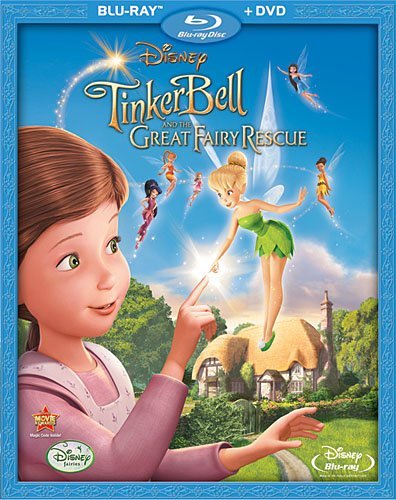 Remember how everyone cheered when John Lasseter took over Disney and announced he was canceling most of the studio’s awful direct-to-video projects? Film lovers (and parents) everywhere understood Lasseter’s zeal for doing away with crap sequels to The Little Mermaid and Beauty and the Beast — but not all home-market releases are created equal, and the rise of the Tinker Bell franchise is a case in point.
Remember how everyone cheered when John Lasseter took over Disney and announced he was canceling most of the studio’s awful direct-to-video projects? Film lovers (and parents) everywhere understood Lasseter’s zeal for doing away with crap sequels to The Little Mermaid and Beauty and the Beast — but not all home-market releases are created equal, and the rise of the Tinker Bell franchise is a case in point.
As we’ve discussed here in the past, it’s fashionable to hate Disney, and there are some good reasons for that — but if you’re going to build a spinoff franchise, the Tinker Bell movies offer a case study in the right way to do it. Tink is a recognizable character, but she wasn’t the basis of the classic film she starred in, and that frees up the studio to tell all kinds of stories about her without interfering with parents’ fond Peter Pan memories — and tell those stories with computer-generated animation, to boot.
The sight of an animated sequel or spinoff isn’t exactly encouraging, especially of the CG variety, so from the outside, the Tinker Bell movies might look like cheap cash-ins on a classic film. But this is John Lasseter’s Disney, where quality is king; if you’re allergic to fairy cartoons, then it’s doubtful that anything here will change your mind, but if you’ve avoided the Tinker Bell spinoffs because you suffered the horror of Return to Never Land or Lady and the Tramp II: Scamp’s Adventure, then dive right in.
Like the first two installments of the Tinker Bell saga, The Great Fairy Rescue takes place before Tink meets Peter Pan, Wendy, or any of the other characters from her most famous adventures. Unlike the others, however, Rescue functions as a more direct prequel to Peter Pan. The story, which picks up after Tinker Bell and the Lost Treasure, follows the headstrong Tink (Mae Whitman) to the annual Fairy Camp, where she ignores the warnings of fellow fairy Vidia (Pamela Adlon) and ends up locked in a “fairy house” built by young Lizzie Griffiths (Lauren Mote), who takes Tink home, thus setting in motion the titular rescue. (It’s actually Vidia who ultimately needs rescuing, but still, the story starts here.)
Rescue expands the mythology of the series (we learn that fairies are responsible for painting butterfly wings, putting the strips on bees, and can’t fly in the rain) while making room for some cute callbacks to Peter Pan, like Tink’s discovery that pixie dust can make people fly, or that when she talks, humans only hear the sound of a bell. We’re also treated to a few glimpses of the impetuous, sometimes violent nature she displayed when we first met her. It might boast eye-popping, up-to-the-minute visuals (and more on that in a minute), but Tinker Bell and the Great Fairy Rescue is built on rich, clever storytelling that ties into the Disney tradition more strongly than you’d have a right to expect.
On Blu-ray, this movie is a surprising treat. With its stellar archival releases, Disney has demonstrated that it knows its hi-def stuff, and Great Fairy Rescue finds them continuing to make amends for the decade they spent using the home market as a dumping ground for subpar product. It may not have quite as much polish as your average Pixar release, but it still boasts a rich color spectrum, deep detail, and a broad, immersive soundtrack experience. In other words: It looks and sounds great.
But all of that counts for naught if the kids don’t like it, and I’m here to tell you that Tinker Bell and the Great Fairy Rescue has been one of the bigger hits of the year with the pint-sized testers here at Dadnabbit HQ. Both of my kids (Sophie, nearly five, and Owen, almost three) enjoyed the first two installments, but they really took a shine to Rescue — in fact, as the closing credits rolled after their first viewing, they bolted out the back door and into the yard, flapping their arms and pretending to be fairies. How much more of an endorsement do you need?
